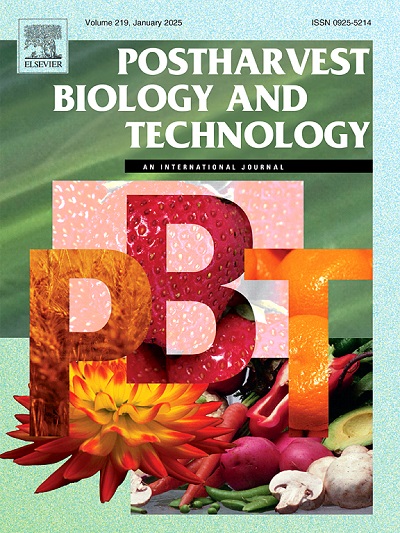硫化氢能增强 PpbHLH3 控制的蔗糖积累对桃子耐寒性的影响
IF 6.4
1区 农林科学
Q1 AGRONOMY
引用次数: 0
摘要
冷害(CI)是制约桃产业采后保鲜的一个严重问题。硫化氢(H2S)处理可有效缓解水蜜桃的冷冻伤,但其分子机理仍不清楚。本研究的结果表明,与对照组相比,H2S 处理可保持较低的内部褐变指数、电解质渗漏和丙二醛含量,而低牛磺酸(HT,H2S 清除剂)在冷藏期间则存在相反的结果。同时,与对照组和 HT 相比,H2S 处理诱导蔗糖合成酶(SS-s)和蔗糖磷酸合成酶(SPS)的活性和基因表达水平升高,而抑制液泡转化酶(VIN)和中性转化酶(NI)的活性和基因表达水平降低,这与蔗糖积累以及果糖和葡萄糖的减少是一致的。此外,转录因子 PpbHLH3 对低温和 H2S 处理有反应,并位于细胞核中。过表达 PpbHLH3 的结果表明,桃果实中 PpSPS 和 PpSS-s 的表达量增加,而 PpVIN 和 PpNI 的表达量减弱。进一步研究发现,PpbHLH3 可分别通过结合 PpSPS 和 PpVIN 启动子 E-box 激活和抑制 PpSPS 和 PpVIN 的表达。因此,这些研究结果表明,H2S 处理通过提高 SS 和 SPS 的基因表达和活性,抑制 VIN 和 NI 的基因表达和活性,促进了 PpbHLH3 介导的蔗糖积累,有助于提高冷藏桃果实的抗寒性。本文章由计算机程序翻译,如有差异,请以英文原文为准。
Hydrogen sulfide enhances PpbHLH3-controlled sucrose accumulation in peach chilling tolerance
Chilling injury (CI) is a serious problem that restricts postharvest preservation of peach industry. Hydrogen sulfide (H2S) treatment efficiently mitigated CI of peach, whereas the molecular mechanism of which remains elusive. In this study, results showed that H2S treatment maintained lower internal browning index, electrolyte leakage and malondialdehyde content in comparison with control, while hypotaurine (HT, H2S scavenger) existed with the reverse results during cold storage. Meanwhile, H2S treatment induced higher activities and genes expression levels of sucrose synthase-synthesis (SS-s) and sucrose phosphate synthase (SPS), while suppressing lower these levels of vacuolar invertase (VIN) and neutral invertase (NI) compared to control and HT, which was concomitant with sucrose accumulation and decrease of fructose and glucose. Moreover, transcription factor PpbHLH3 was shown to respond to low temperature and H2S treatment and located in nucleus. Results of PpbHLH3 overexpression showed that PpSPS and PpSS-s expressions were elevated, while PpVIN and PpNI expressions were weakened in peach fruit. Further investigation revealed that PpbHLH3 could activate and inhibit the expression of PpSPS and PpVIN by binding PpSPS and PpVIN promoter E-box, respectively. Consequently, these findings revealed that H2S treatment promoted PpbHLH3-mediated sucrose accumulation by improving the gene expression and activities of SS and SPS, and inhibiting the gene expression and activities of VIN and NI, contributing to the enhancement of cold resistance in cold-stored peach fruit.
求助全文
通过发布文献求助,成功后即可免费获取论文全文。
去求助
来源期刊

Postharvest Biology and Technology
农林科学-农艺学
CiteScore
12.00
自引率
11.40%
发文量
309
审稿时长
38 days
期刊介绍:
The journal is devoted exclusively to the publication of original papers, review articles and frontiers articles on biological and technological postharvest research. This includes the areas of postharvest storage, treatments and underpinning mechanisms, quality evaluation, packaging, handling and distribution of fresh horticultural crops including fruit, vegetables, flowers and nuts, but excluding grains, seeds and forages.
Papers reporting novel insights from fundamental and interdisciplinary research will be particularly encouraged. These disciplines include systems biology, bioinformatics, entomology, plant physiology, plant pathology, (bio)chemistry, engineering, modelling, and technologies for nondestructive testing.
Manuscripts on fresh food crops that will be further processed after postharvest storage, or on food processes beyond refrigeration, packaging and minimal processing will not be considered.
 求助内容:
求助内容: 应助结果提醒方式:
应助结果提醒方式:


